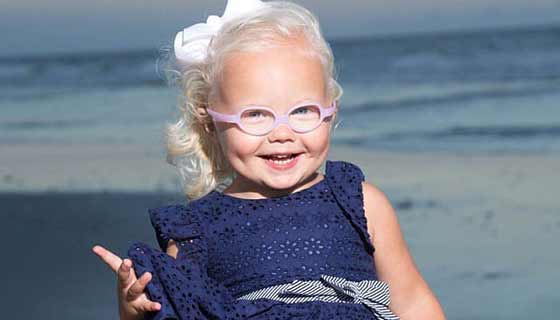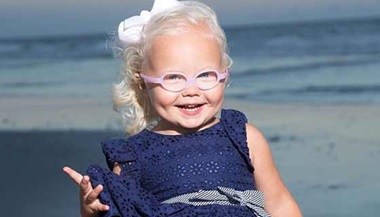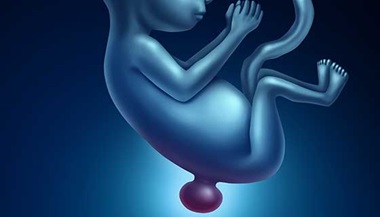Chiari Malformation Type I
What You Need to Know
- There are two main kinds of Chiari malformations.
- Type 1 Chiari malformation symptoms and signs can show up in infants, children, teens or adults.
- Type 2 Chiari malformation is associated with spina bifida and is present at birth.
- Surgery can address symptoms such as headache, hydrocephalus, sleep apnea and others.
What is a Chiari malformation?
A Chiari malformation is a problem in which a part of the brain (the cerebellum) at the back of the skull bulges through a normal opening in the skull where it joins the spinal canal. This puts pressure on parts of the brain and spinal cord, and can cause mild to severe symptoms. In most cases, the problem is present at birth (congenital).
There are several types of Chiari malformations, but type I is the most common. In type I, the cerebellum bulges through the normal opening at the base of the skull. This type is most often congenital. It is also called primary Chiari malformation type I. But it is often not found until a person is a teen or young adult.
In rare cases, this type may also develop later in life. This is known as acquired or secondary Chiari malformation type I.
What causes a Chiari malformation type I?
The exact cause of a congenital Chiari malformation type I is not known. A problem during fetal growth may cause the defect. It may be caused by contact with harmful substances during pregnancy. Or it may be linked with genetic problems that run in families.
An acquired Chiari malformation type I happens to a person after birth. It is caused by excess leaking of spinal fluid from the lower back (lumbar) or chest (thoracic) areas of the spine. This can happen because of an injury, contact with harmful substances, or an infection.
The Chiari Malformation: What's New?

Dr. Alan Cohen, chief of pediatric neurosurgery, gives an overview of the different types of Chiari malformations and how they're treated. Dr. Cohen also explains why not all cases will need surgery.
Signs and Symptoms of Chiari Malformations
Syrinx
Chiari malformations are associated with the formation of a syrinx, a fluid-filled pocket, or cyst, in the spinal cord. This condition also known as syringomyelia. As the cyst fills with cerebrospinal fluid, it expands, putting pressure on the spinal cord.
In some patients with a Chiari malformation, increasing pressure from a syrinx can affect neuromuscular function, causing limb weakness or difficulties with walking or breathing.
Some children will show signs of a spine syrinx, but others will not. In these situations, an MRI scan may be needed for a definite diagnosis.
Scoliosis
In children younger than 16 whose spines are still growing, the presence of a syrinx can also be associated with the development of scoliosis, an abnormal, lateral (side-to-side) curvature of the spine.
Headaches
Toddlers, children and teens with undiagnosed type 1 Chiari malformations may develop headaches, which are typically located at the back of the head and neck, and are often made worse by exertion.
Hydrocephalus
Type 2 Chiari malformations can also be associated with hydrocephalus, a condition in which there is an obstruction of the flow of cerebrospinal fluid that is found inside of the ventricles (fluid-filled areas) inside of the brain.
The buildup of fluid causes the pressure inside of the head to increase and the child’s skull bones to expand to a larger-than-normal appearance.
Sleep Apnea
Sleep apnea is another problem that occurs in people with a Chiari malformation. This is a serious sleep disorder characterized by brief interruptions in breathing during sleep. A sleep study can confirm the presence of sleep apnea so a doctor can prescribe treatment.
Other Symptoms
Chiari malformation symptoms can also include:
-
Hoarseness
-
Difficulty swallowing
-
Rapid, side-to-side eye movements (nystagmus)
-
Muscle weakness, lack of balance or abnormal reflexes
-
Nerve problems, including paralysis
How is a Chiari malformation type I diagnosed?
If you have no symptoms, the problem may be found when you have imaging tests for other reasons. If you have symptoms, your healthcare provider will ask about your health history and give you a physical exam. He or she may refer you to a specialist.
Imaging tests are done to detect a Chiari malformation type I. Your child may have 1 or more of these tests:
-
MRI.This test is the one most often used to diagnose Chiari malformations. It uses large magnets and a computer to make detailed pictures of the inside of the body.
-
CT scan.This test uses a series of X-rays and a computer to create detailed pictures of the inside of the body. A CT scan is more detailed than a regular X-ray.
How is a Chiari malformation type I treated?
You may be treated by a neurologist or neurosurgeon. These are experts in brain and spinal cord problems. Treatment will depend on your symptoms, age, and general health. It will also depend on how severe the condition is.
-
With no symptoms. Your health may be watched closely. This may include frequent physical exams and MRI tests.
-
With symptoms. Your healthcare provider may prescribe medicines to reduce pain. Or he or she may choose surgery. This is done to relieve pressure on the brain or restore the flow of spinal fluid.
-
With few or no symptoms, but a syrinx. Your healthcare provider may suggest close monitoring of the defect with a special type of MRI called cine phase contrast. This test looks at the flow of spinal fluid. It also looks at areas where the fluid is blocked. You may need surgery, based on the MRI results or if symptoms get worse.
-
With signs of sleep apnea. You may need a sleep study if you have sleep apnea. Sleep apnea means that you stop and start breathing during sleep. A sleep study can also help your healthcare provider decide if you need other treatment.
What other health problems are caused by a Chiari malformation type I?
These health problems can include:
-
Long-term pain
-
A pocket of spinal fluid (syrinx) in the spinal cord or brain stem. This forms over time.
-
Life-long damage to muscles or nerves
-
Not being able to move your arms or legs because the muscles no longer work (paralysis)
Carefully watching for changes in your health can help prevent these problems. This helps to make sure that treatment is done early.
When should I call my healthcare provider?
Call your healthcare provider if you notice any changes. Be sure to call if you notice problems with:
-
Breathing
-
Swallowing
-
Feeding
-
Speaking
-
Walking or moving
Key points about Chiari malformation type I
-
With a Chiari malformation, the lower part of the brain dips down through a normal opening at the bottom of the skull.
-
There are several types of Chiari malformations. Type I is the most common type.
-
In most cases, the problem is present at birth (congenital). But it may not be found until a person is a teen or young adult.
-
You may not have symptoms. If symptoms occur, the most common ones are headaches or pain in the back of the head or neck. The headaches and pain are made worse by coughing, laughing, or sneezing.
-
You may also have a pocket of spinal fluid in the spinal cord or brain stem. This is called a syrinx.
-
Imaging tests are done to detect a Chiari malformation type I. You may have an MRI or a CT scan.




